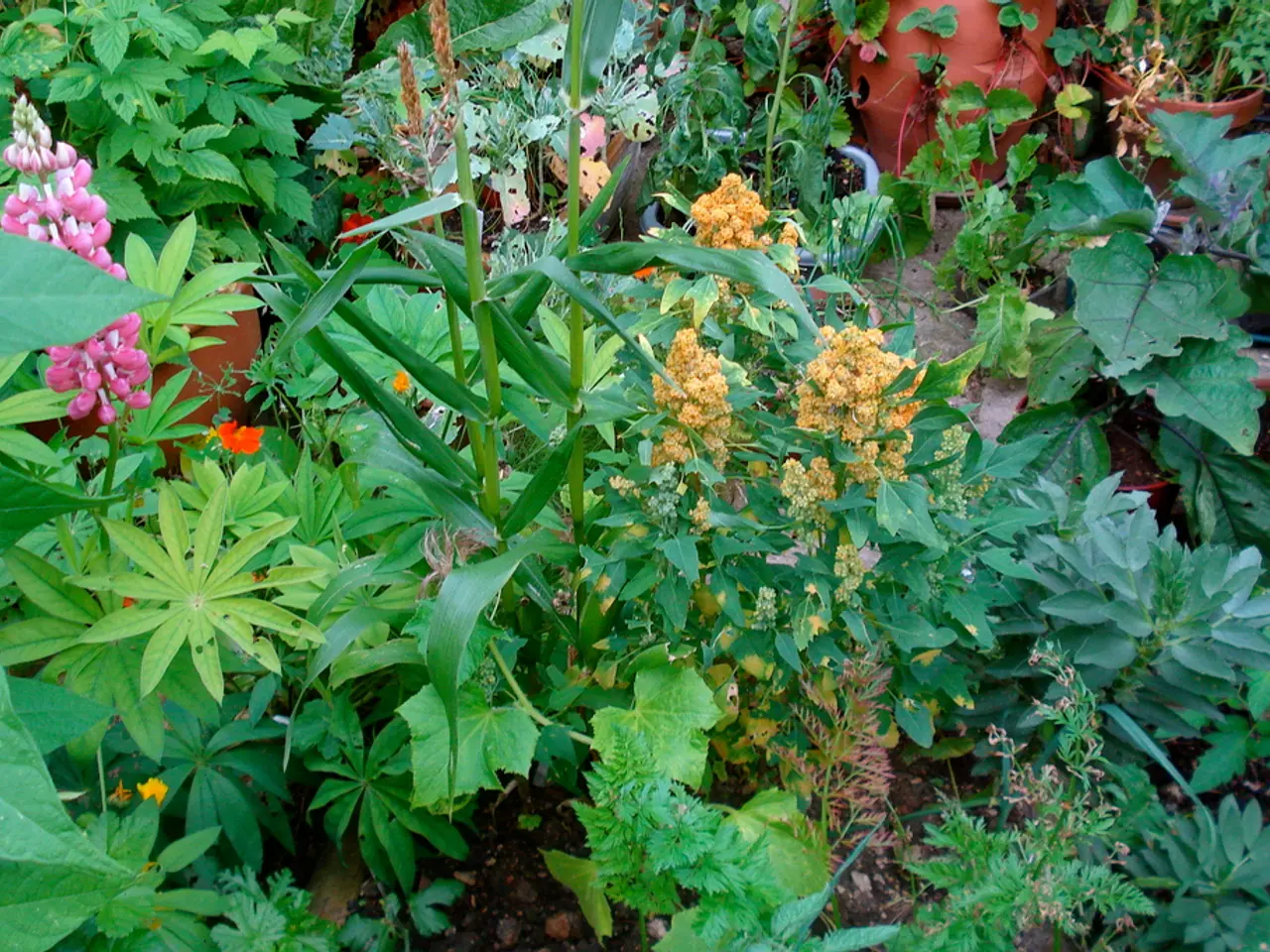Transform Your Garden into a Tranquil Retreat Using Expert Designer's Suggestions
Creating a Peaceful Garden Sanctuary: Tips from Garden Design Experts
In today's fast-paced world, finding a quiet and peaceful space to unwind can be a challenge. But, with some careful planning and design, you can transform your garden into a tranquil retreat that reduces stress and improves wellbeing. Here are some tips from renowned garden designers to help you achieve this goal.
Water Features
Water features such as small fountains or ponds provide gentle, relaxing sounds that mask disruptive noise and enhance tranquility. According to designer Jo Thompson, the sound should be of a decent volume, falling from a good height into a depth of pool for maximum impact.
Natural Greenery
A soothing, living backdrop is essential for a peaceful garden. Holly Johnston, designer of the Bridgerton Garden, recommends using a mix of trees, shrubs, and plants, ideally including native or low-maintenance perennials. She also suggests layering planting in front of hedges with a mix of shrubs, perennials, and grasses to soften the look and create a cohesive scheme.
Cozy Seating Areas
Positioning comfortable seating in quiet corners or shaded spots offers a perfect place to relax, meditate, or read. Gardens are ever evolving, and focusing on the process rather than the outcome can provide simple moments for intentional unwinding, according to Holly Johnston.
Soft Ambient Lighting
Soft ambient lighting using lanterns, string lights, or solar lamps extends usability and creates a peaceful mood in the evenings.
Privacy Structures
Privacy structures such as hedges, green walls, bamboo blinds, or pergolas add enclosure, reduce noise, and increase a sense of seclusion and safety. Dense evergreen hedges can be used as an alternative to acoustic fence panels for noise reduction.
Natural Materials
Using natural materials (wood, stone, teak furniture, limestone pathways) and textures brings warmth and helps blend the garden aesthetically into its surroundings.
Thoughtful Layout and Space Planning
Thoughtful layout and space planning, including vertical gardening and space-saving planters, especially for smaller gardens, maximize the relaxing effect even in limited areas.
Additional Tips
- Incorporate areas for different activities such as meditation, reading, or casual socializing.
- Use plants and colors that promote calm, such as greens, soft blues, lavenders.
- Play soft background music or natural soundscapes to enhance relaxation.
- Ensure easy maintenance to keep the space inviting and stress-free.
This approach suits any garden size or style—from minimalist modern to lush Alpine-inspired sanctuaries—allowing you to tailor your peaceful garden retreat to your needs and preferences.
Growing scented plants, such as Philadelphus, roses, lavender, thyme, Daphne, star jasmine, and sweet box, can lift spirits and promote relaxation. The birch trees at the boundary of the tiny urban garden designed by John Davies help screen out overlooking neighbours and serve as a green focal point.
Remember, gardens are never truly 'finished', and focusing on the process rather than the outcome can provide simple moments for intentional unwinding. So, take your time, enjoy the journey, and create your own peaceful garden sanctuary.
- Utilizing water features like small fountains or ponds can offer peaceful sounds, masking noise and enhancing tranquility in your garden.
- For a soothing living backdrop, consider a mix of trees, shrubs, and plants, incorporating native or low-maintenance perennials suggested by Holly Johnston.
- Comfortable seating in quiet corners or shaded spots, as recommended by Holly Johnston, offers a perfect place for relaxation, meditation, or reading.
- Soft ambient lighting with lanterns, string lights, or solar lamps can extend usability and create a peaceful mood in the evenings.
- Privacy structures such as hedges, green walls, bamboo blinds, or pergolas can add enclosure, reduce noise, and increase a sense of seclusion and safety.
- Using natural materials like wood, stone, teak furniture, and limestone pathways brings warmth and helps blend the garden aesthetically into its surroundings.




